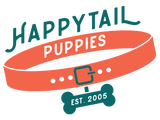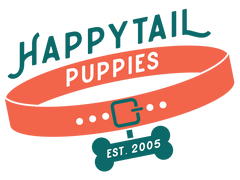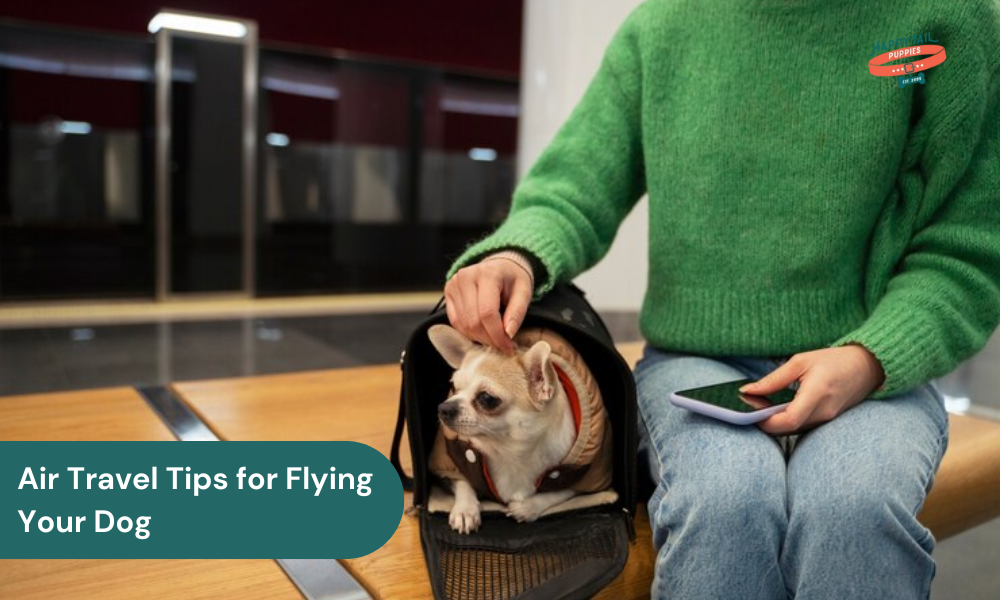Air Travel Tips for Flying Your Dog
Flying with your dog can be a rewarding experience with the right preparation. From vet visits to packing essentials and understanding airline policies, ensure your furry friend travels safely and stress-free.
Air travel with your dog is the most enjoyable experience; however, it involves some intricate planning, preparation, and knowing about the things to expect. It is important to keep your pet safe, stress-free, and comfortable while flying becomes the main priority. However, with the appropriate guidance and the right equipment, flying your dog can turn into the most pleasant endeavor. In our blog today, we are going to share a couple of tips to help you fly with your dog, mainly with small dog breeds.
Understanding the Challenges of Flying with Your Dog
Traveling by air with your dog comes with its share of complexities that involve some special attention, mainly considering small dog breeds like the Bichon Frise, Pomeranians, or the Teacup Havanese. Generally, dogs are often more prone to the surroundings, with air travel becoming stressful for them whenever not managed appropriately. The safety, comfort, and overall optimal well-being of your dog in flight are important, and staying prepared well ahead of time travels a greater route, ensuring a seamless journey.
Flying with pups involves paying greater attention to minute details, such as temperature control, flight duration, and even cabin pressure changes, which often influence your pet. Moreover, some small dogs might struggle with separation anxiety or become nervous in new environments. Knowing about these complexities can help you plan trips with dogs effectively and ensure the most enjoyable experience for both of you.
Tips For Flying With a Dog
Prepare Well in Advance
The best Air travel tips for dogs should be initiated long before you book your flight. Small dog breeds like the Pomeranians or the Havanese often have distinctive sensitivities or requirements when considering air travel. You should initiate short car trips to make your dog accustomed to staying in a confined space. This will help your pup become accustomed to traveling in a kennel or carrier, which it will require during the flight.
A few dogs often experience travel anxieties. It is often ideal to discuss with your vet any specific medications that can reduce stress. Remember that not every medication meets the safety standards for traveling on a plane with your dog. Therefore, always ensure that you get the best professional advice before administering anything.
Check Airline Pet Policies
Each airline comes with its own set of guidelines when you plan on flying with the dogs. Prior to booking your flight, ensure that you scroll through the pet policies offered by the airline. A few of the airlines might involve more documentation like health certificates, proof of vaccinations, or any acclimation certifications, mainly for the small dog breeds, which are more delicate due to their health and size.
Confirm whether your dog will fly in the cabin with you or in the cargo hold. Small dog breeds generally fly with you in the cabin; however, if the dog is too big to fit under the seat, it must be transported through the cargo hold. Knowing about your pup's distinctive needs can help you avoid any last-minute surprises.
See a Vet
Visiting the vet is important right before you plan to fly with your dog. For small dog breeds like Bichon Frise, flying at higher altitudes at times causes a lot of discomfort, mainly when there are any underlying health-related issues. A vet checkup often ensures that your dog is healthier enough to take a flight. Also, ensure that your dog is updated on their flea treatments and vaccinations, with a few destinations having distinctive health requirements tailored for pets. Ensure that you ask your vet about travel-based recommendations like sedatives or ear drops that prove beneficial for the specifically anxious or nervous pups.
Pack for Your Dog’s Comfort
As one of the best dog air travel tips, it is important to consider that you are packing right more than the carrier. Here is what you should know.
1) Water and a bowl: Hydration is a must-have, so ensure to pack a spill-proof water bottle along with a collapsible bowl whenever your dog becomes thirsty while on the journey.
2) Food and snacks: If you find your dog to fly for more than a couple of hours, ensure to pack their regular food along with a few snacks. Try avoiding feeding them right before the flight, preventing the chances of motion sickness.
3) Comfort items: Try bringing along a blanket, toy, or any other items that smell like home. This can help you stay comfortable while reducing anxiety while in flight.
4) Medication: Whenever your dog needs medication or has special needs, ensure that you pack everything it requires, including the instructions and prescriptions.
Organize Paperwork
Although this might appear simple, getting a folder for organizing your dog's travel paperwork can help you stay on track with the essential documents. It also offers you a better sense of reassurance that you have the situation under control. The document folder ensures that the airport check-in goes smoothly, as the last thing you want is to be around with the bag at the last minute.

Book the Flight Early
Oftentimes, the airlines have a restriction on the number of animals allowed in each flight. Therefore, it is important to call the airline in advance to ensure that your dog is booked for the spot on the selected flight. Furthermore, a few of the airlines refrain from allowing dogs of a few specific breeds, mainly the brachycephalic ones like the French Bulldogs, for flying for safety reasons, so be sure to confirm whether or not the breed of your dog is allowed on board the flight.
Purchase an Airline-Approved Carrier
If your dog is lightweight or small, some airlines allow them to travel with you in the cabinet. If the dog is over a specified weight or is too big for the carrier to fit under your seat then they have to travel by the cargo hold. Irrespective of what it is, the airlines have distinctive requirements about the kind of carrier or crate to help your dog travel unless they are a service dog, as they often travel in the cabin and never need any space permit.
For instance, the fundamental requirement is that the dogs in the hold have been in a hard-sided, well-ventilated kennel big enough for them to stand up comfortably and turn around. The specifics are detailed here, but you should check with the airline. Soft carriers are permitted in the cabin mainly for safety reasons.
Try to Book a Direct Flight
Booking a direct flight often helps reduce the stress for both you and your pup since it helps remove the worries about connecting flights. It is often the ideal idea to book your flight during the weekdays and consider the right time that will make you and your dog fly in better comfort. For instance, if it is the summer season, flying early in the morning or the evening can help in keeping your dog more comfortable.
Get Your Dog Used to the Carrier
If you do not often make your dog travel by the carrier, then initiate by creating positive reinforcement with it in advance, making it the ideal place where your dogs would love hanging out. Try leaving the carrier out in the open right at home and allow your dog to snooze in it whenever they wish to. When your dog is no more hesitant, try rewarding them with the treats whenever they are approaching the carrier, sniffing it or are staunch enough to try venturing out.
Try to avoid shutting the door right off and only start by practicing this whenever your dog is comfortable and happy to spend time inside the carrier. After your dog is happier spending time in the carrier at home, try to practice a few journeys by taking your dog out for a drive. It can help them prepare to travel in their career.
Plan for Security and Check-In
It is often a lot of stress to pass through the airport security mainly while planning to air travel with a dog. Small dog breeds generally have to be taken out of their carrier while going through the security check. To streamline the process ensure that your dog is familiar with their carrier and often comfortable in being handled.
For security, follow the regulations of the TSA or any similar authorities in your country. You are often asked to remove your dog from the carrier while carrying it through security checkpoints. The carrier then passes through the X-scanner. Ensure your dog is securely leashed and remains calm during this process.
Feed in Advance
It is never a good idea to feed your dog right before you are flying as this would increase their chances of pooping or vomiting during the flight. So, feed your dog around four hours in advance. For the lengthier flights, try clipping a food bowl right within the crate if your dog is traveling in the hold or taping a bag of kibble to the exterior, allowing the airline staff to offer food whenever required. Also, ask the airline regarding this.
Keep Your Dog Hydrated
Try offering water to your pup till you get on the plan. For the dogs who are traveling in crates, you can freeze water the night before in the clip-on bottle, which can get attached to the crate. If you are using one of these bottles, then get your dog to drink out of it in advance. Whenever you are landing at the destination, continue offering your dog water to rehydrate them.
Keep Your Dog Calm During the Flight
When on the flight, your primary objective is to keep your dog calm as well as comfortable. For the small dog breeds, sitting close to their carrier often helps them ease their anxiety. Try avoiding opening the carrier while being in flight, as it causes stress or even confusion for the dog. A few of the dogs often benefit from the pheromone-infused collars or calming sprays that can help reduce anxiety. These are the products that are often beneficial for small dog breeds that tend to become more agitated in confined spaces.
Know What to Expect After the Flight
Once you land, it is time to reunite with your dog and take them for much-needed bathroom breaks. Several airports have dedicated pet relief areas where you can get your pup to stretch out their legs. Ensure to check out for any signs of distress in dogs after the flight, mainly with small dog breeds, which are often sensitive to environmental changes. After you have reached your destination, then, ensure that your dog is getting a lot of rest and is allowed to adapt to the new surroundings. Also, traveling proves exhaustive for dogs; therefore, a soothing space can help them settle in comfortably.
International Travel with Your Dog
If you are planning to travel internationally with your dog, there are additional considerations. Countries often have varied rules related to pet importation, so it is important to check the distinctive needs tailored to your destination. Small dog breeds are often subject to varied regulations depending on the country you are traveling to.
You should also account for the need for quarantine, health inspections, and lengthier flight times. For international flights, it is recommended to inspect the airlines that have the experience to handle the pets as they have the required processes in order to ensure the safety and comfort of the dog.
Conclusion
Planning and avoiding leaving things up for chance are the key while you think about flying with your dog. Not having the proper planning can lead to greater stress for you and your pup, leading to disappointments. Ensure to reach out to the vet for recommendations as their support proves the best at the time, and also speak to the airline over call to make the requisite arrangements while asking for the questions that you might have. Always understand that every dog is different based on their breed type, and it is important to consider the temperament of your dogs and needs whenever you are planning for air travel.


